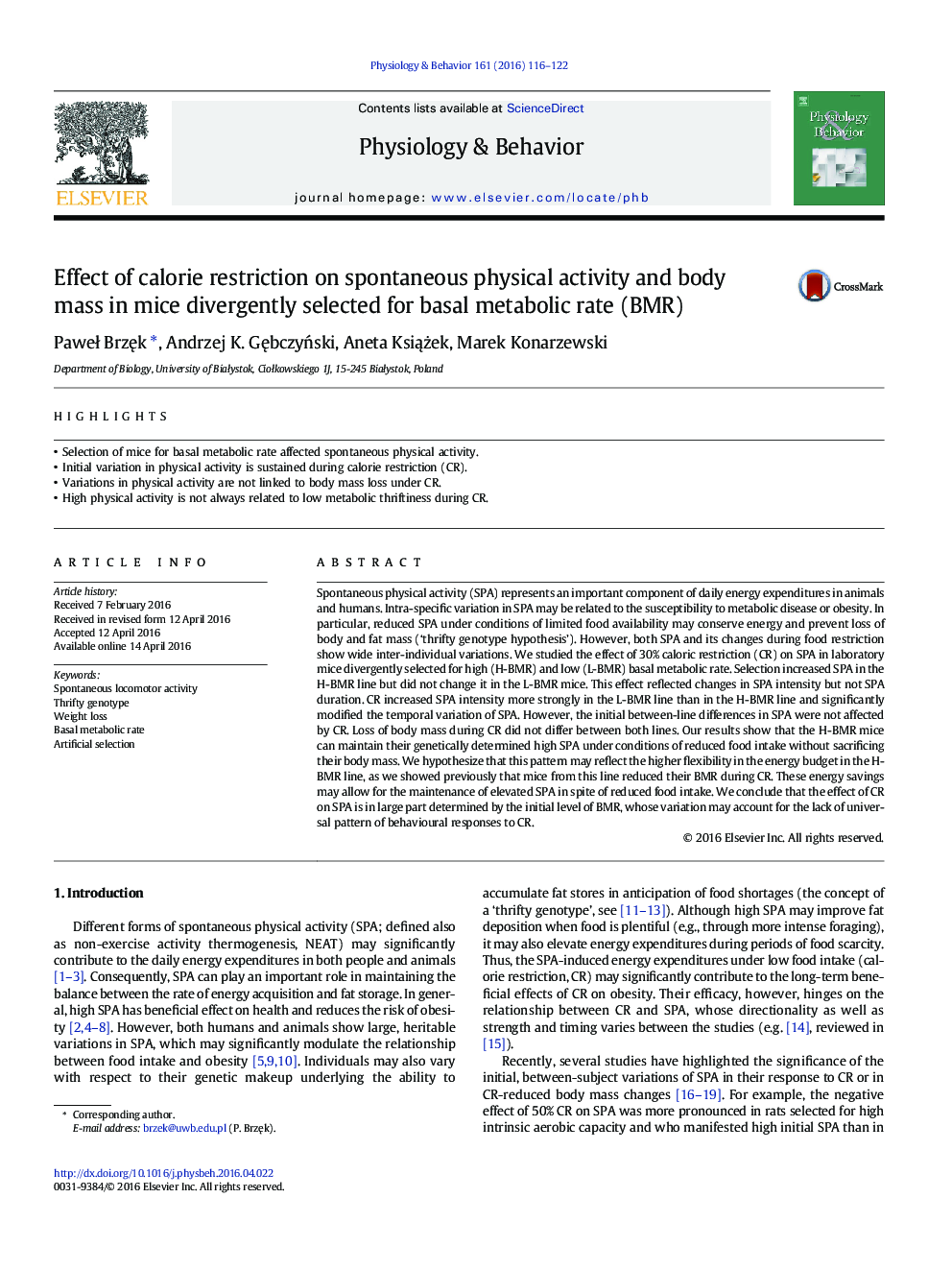| کد مقاله | کد نشریه | سال انتشار | مقاله انگلیسی | نسخه تمام متن |
|---|---|---|---|---|
| 2843881 | 1571157 | 2016 | 7 صفحه PDF | دانلود رایگان |

• Selection of mice for basal metabolic rate affected spontaneous physical activity.
• Initial variation in physical activity is sustained during calorie restriction (CR).
• Variations in physical activity are not linked to body mass loss under CR.
• High physical activity is not always related to low metabolic thriftiness during CR.
Spontaneous physical activity (SPA) represents an important component of daily energy expenditures in animals and humans. Intra-specific variation in SPA may be related to the susceptibility to metabolic disease or obesity. In particular, reduced SPA under conditions of limited food availability may conserve energy and prevent loss of body and fat mass (‘thrifty genotype hypothesis’). However, both SPA and its changes during food restriction show wide inter-individual variations. We studied the effect of 30% caloric restriction (CR) on SPA in laboratory mice divergently selected for high (H-BMR) and low (L-BMR) basal metabolic rate. Selection increased SPA in the H-BMR line but did not change it in the L-BMR mice. This effect reflected changes in SPA intensity but not SPA duration. CR increased SPA intensity more strongly in the L-BMR line than in the H-BMR line and significantly modified the temporal variation of SPA. However, the initial between-line differences in SPA were not affected by CR. Loss of body mass during CR did not differ between both lines. Our results show that the H-BMR mice can maintain their genetically determined high SPA under conditions of reduced food intake without sacrificing their body mass. We hypothesize that this pattern may reflect the higher flexibility in the energy budget in the H-BMR line, as we showed previously that mice from this line reduced their BMR during CR. These energy savings may allow for the maintenance of elevated SPA in spite of reduced food intake. We conclude that the effect of CR on SPA is in large part determined by the initial level of BMR, whose variation may account for the lack of universal pattern of behavioural responses to CR.
Journal: Physiology & Behavior - Volume 161, 1 July 2016, Pages 116–122